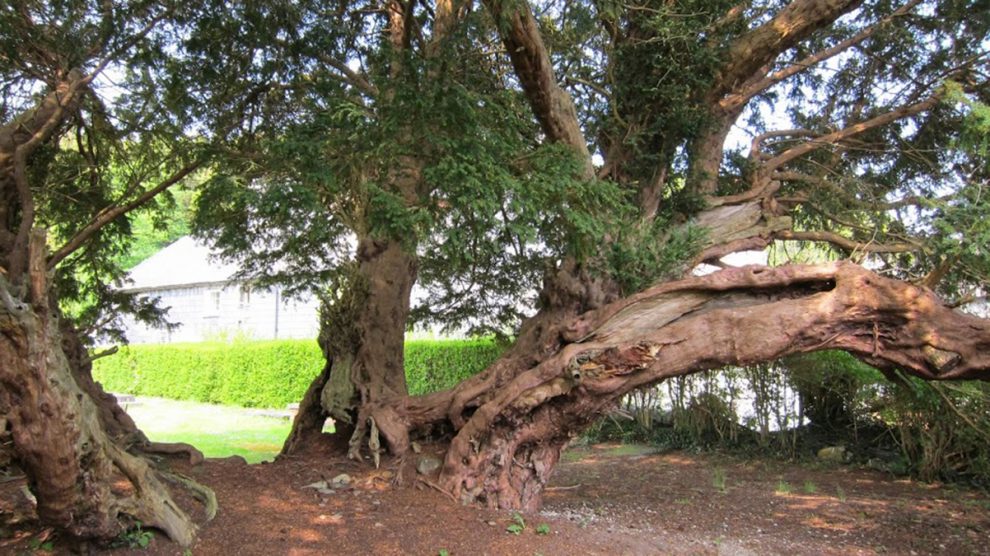FROM churches, chapels and castles, Wales is home to some wonderful historic attractions, but one of the oldest might surprise you.
It’s an ancient yew tree in Llangernyw, dating back over 4000 years.
This tree is a remarkable living survivor from prehistoric times and probably germinated in the Bronze Age, about 4,000 years ago.
Today it’s situated in the grounds of St Digain’s Church for all to see.
Yew trees survive by regenerating. The centre of the Llangernyw yew is a void, where the original growth has died back over the millennia. Younger wood grows around the void, drawing nutrients from the prehistoric roots.
Celts regarded the yew as a sacred tree, and were fascinated by its ability to die and re-grow.
The girth of the tree at the ground level is 10.75 m (35.3 ft).
The area around the Llangernyw yew may have been used for worship before Christianity came to Wales, with the site later being adopted for Christian purposes.
The tree had to be enormous already by the time when the first Christian shrine was established here. It is possible that this happened in early medieval times, although the current church is not earlier than the 13th century.
Whatever the sequence of events, instead of a yew being planted near a church (as was common across Britain), this church was ‘planted’ near a yew.
Next to the wall of the church are two standing stones, with the third as a stepping stone between them. Primitive crosses are etched in each of these stones – a common practice of the church to “Christianize” paganic idols. This weird portal now leads directly in a blind wall – but who knows, where it led before the church was built here?
In the mid-1990s the church oil tank stood in the space between the two trunk fragments; however, this was moved when it was realised that the tree was ancient.
When this tank was built a lot of the dead wood was removed from the site which makes dating the age of the tree more difficult for dendrochronologists.
In June 2002, the Tree Council, in celebration of the Golden Jubilee of Queen Elizabeth II designated the Llangernyw Yew tree one of the Fifty Great British trees in recognition of its place in national heritage.
Poet Margaret Sandbach, of nearby Hafodunos Hall, described a funeral here in 1852: “I was walking down to the village one day in the spring – there had been a heavy shower, and a beautiful and striking scene met my eye as I approached the church. There was a funeral – and under the old yew tree a dark group of mourners had gathered around the grave – a gleam of light fell upon the spot – a rainbow made a bright arch above, and the misty shower was fading away on the hills.
“Earth and heaven seemed blended then – the dark group below – the brightness above. It was perfectly calm too, and not a sound disturbed the solemnity of the scene…”
According to local tradition, the church of Llangernyw is inhabited by an ancient spirit known as Angelystor (the “Recording Angel” or “Evangelist”).
This tradition holds that every year at Halloween a booming voice foretells the names of parishioners who will die the following year.
Folklore tells of a disbelieving local man, Siôn Ap Rhobert, who challenged the existence of the spirit one Halloween night only to hear his own name called out, followed by his death within the year.



















Add Comment